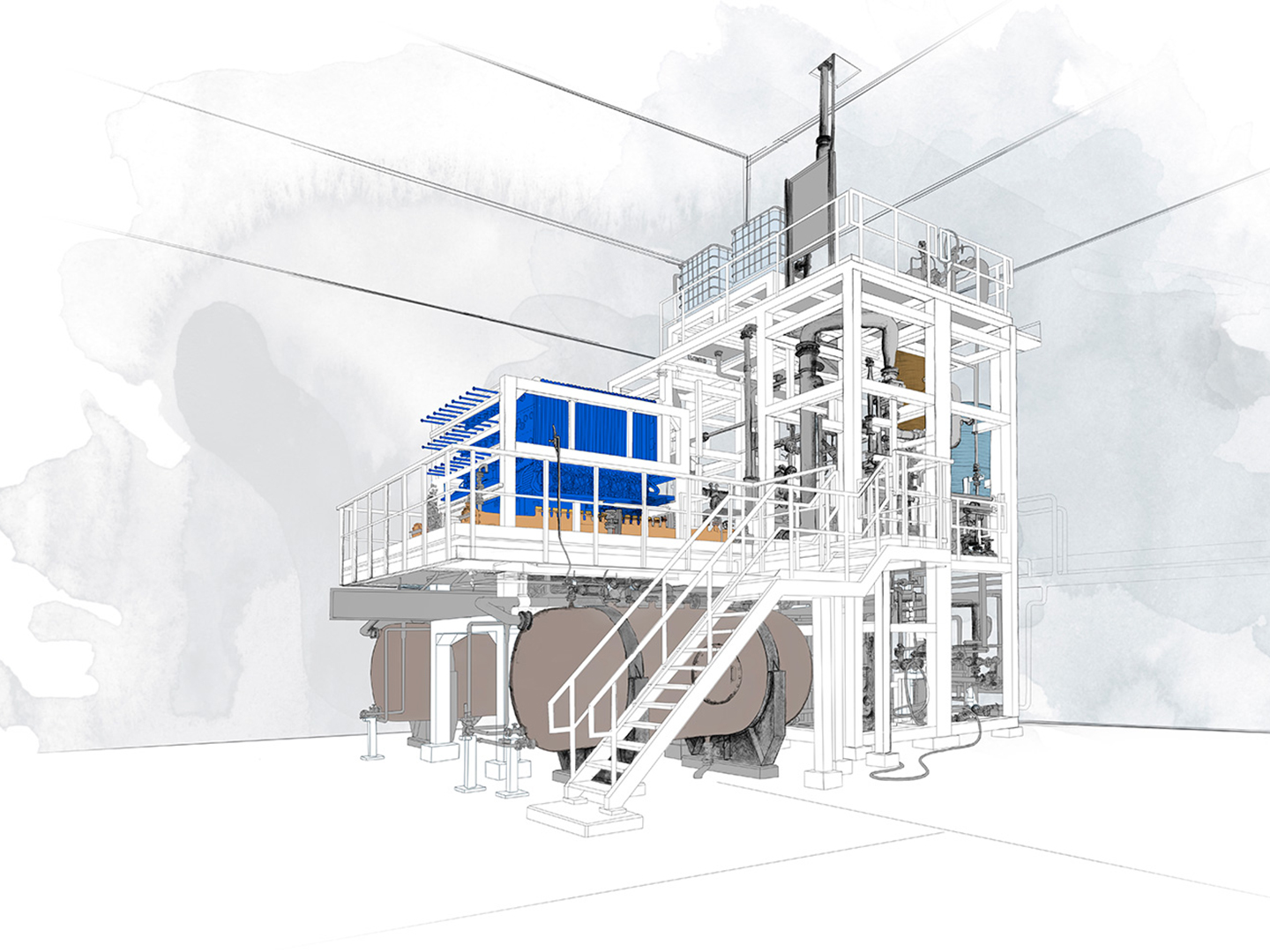
Hydrogen plays a special role in linking the energy, steel, and chemical sectors in terms of both energy and material aspects. Research into dynamic water electrolysis while taking into account the varying supply of metallurgical gases as well as fluctuating, renewable electricity thus represents the core of this subproject.
Tasks
In cooperation with the Hydrogen and Fuel Cell Center (ZBT), thyssenkrupp is researching the effects of fluctuating load profiles on various electrolysis systems. To do this, the systems are dynamically operated and examined at ZBT. Based on these experimental results, the long-term behavior is predicted using a simulation model. The construction of a water electrolyzer in the technical center (MW power consumption), as well as several laboratory scale test stands (kW power consumption), is also an integral part of the subproject. By combining the research results from the plants, the performance for an industrially relevant plant size is predicted.
Due to the complex, dynamic requirements of the entire Carbon2Chem® production network, a model for water electrolysis is created and incorporated into the overall simulation of Carbon2Chem®.
Aims
The aim of the overall Carbon2Chem® project is to merge the energy, steel, and chemical sectors into a cross-industrial production network. The process of water electrolysis plays a key role as hydrogen is required for almost all subsequent synthesis routes. The availability of this gas must be ensured despite the use of fluctuating renewable energies as well as the fluctuating hydrogen content in the metallurgical gases. These requirements inevitably lead to rethinking the previously known mode of operation of electrolyzers. Due to the material, large quantities of carbon-containing process gases are produced in the metallurgical plant, some of which are already being used internally today in the integrated steelworks. In order to use the other gases available, especially climate-relevant CO2, in addition to the purity of the hydrogen produced, availability must be ensured in keeping with the supply of metallurgical gas. The aim of this subproject is the simulation-supported evaluation of different electrolysis techniques with regard to the requirements in non-stationary operation, as well as the construction of a commercial electrolyzer, which has both the flexibility required by Carbon2Chem® and the required system capacity.
 Fraunhofer Institute for Environmental, Safety and Energy Technology UMSICHT
Fraunhofer Institute for Environmental, Safety and Energy Technology UMSICHT